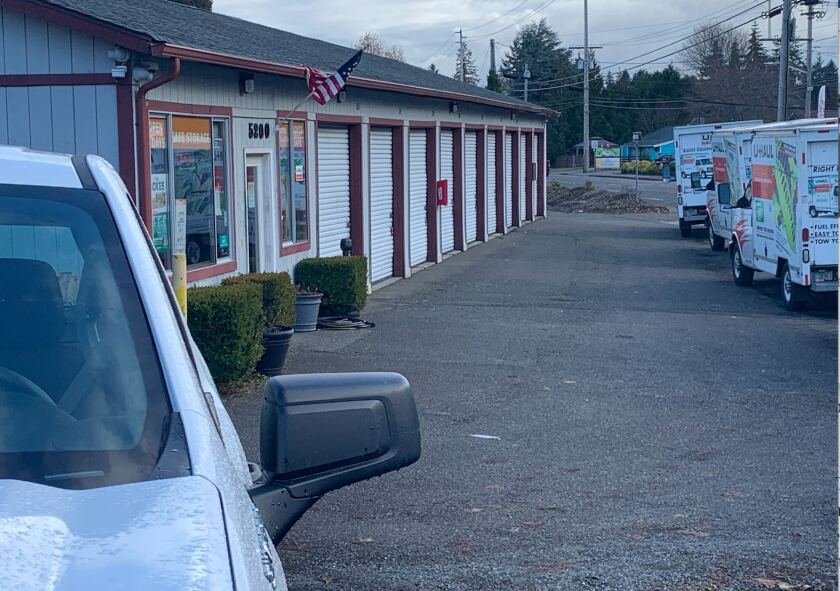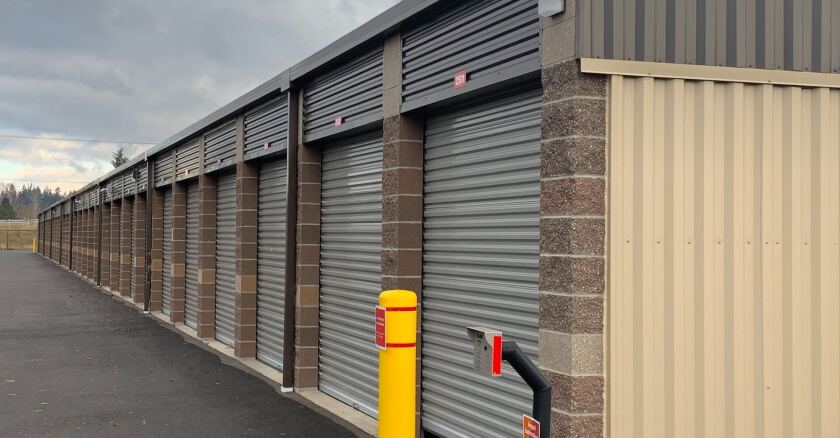As the holidays approach, I thought it might be useful to lighten the tone a little as we survey the national political situation in 2022.
Two weeks ago, former President Trump’s attorneys came forward with two top security documents that they said they found in a storage facility rented on Trump’s behalf near Mar-a-Lago. Putting aside for the moment the fact that the former president had no legal right to leave the White House with any documents relating to his presidency, and certainly not top security documents, Trump’s need for an external storage unit in West Palm Beach is a characteristic American habit, even if you live in a 126-room, 62,500-square-foot mansion with gold-plated sinks. When I heard the news, I didn’t sympathize with Mr. Trump, but I did reckon that I understood how important items can get scattered or lost after a hasty move from one part of the country to another.

In other words, every one of the 340 million Americans could simultaneously find a place to stand inside one of the nation’s storage facilities — and wouldn’t that be an addition to the Guinness World Records? According to 2018 statistics, there are more than 23 million individual storage units in the United States. That’s one for every 14 Americans. Self-storage facilities employ more than 170,000 people in the United States. The existing infrastructure is at 90 percent capacity. Americans apparently cannot get enough external storage space.
The Rise of Storage Facilities
What presumably happened to the Trumps is typical. A family moving from one location to another rents a storage unit to house things they are not yet ready to assimilate into their new home. Pretty soon they more or less forget about it, especially if the rent is auto deducted from their bank accounts. Even if they recall from time to time that they have a storage facility across town that they need — at some point — to deal with, they often forget just what’s in it. In fact, whenever something important goes missing in the new home, they eventually wonder if maybe it’s over in the storage unit.
Even then, incentive to go check is low. Where is the card key to get into the facility and where is the padlock key to get into the unit? And is it unit 117 or 137? The jumble of furniture, bed frames, discarded toys, financial records, old clothes, dishes no longer in use, cooking equipment, framed prints, high school trophies and lamps is so daunting that it is just easier to leave it alone.
Abandoned Units, Shattered Lives
A compilation of high-dollar finds from the A&E series, Storage Wars.
In fact, a surprisingly large number of storage units are eventually abandoned. According to the company Simply Self Storage, 155,000 storage units are auctioned off every year. Such popular cable shows as Storage Wars and Auction Hunters chronicle this uniquely American phenomenon. The average auction generates $425 per unit, making that sub-industry value out at $65 million per year.
According to the Xtra Storage company, there are six reasons why people abandon their storage units: financial hardships, divorce, extended hospitalization, untimely death, imprisonment, or the renters simply forget about them, often when they relocate to some other community. Derek Naylor, the former president of Storage Marketing Solutions, explained to theNew York Times one of the reasons why storage facilities are so profitable. “Human laziness has always been a big friend of self-storage operators. Because once they’re in, nobody likes to spend all day moving their stuff out of storage. As much as they can afford it, and feel psychologically that they can afford it, they’ll leave their stuff in there forever.”
At some point someone is going to clean out that storage unit and dispose of whatever is inside either lovingly or with ruthless insensitivity. The reason the owners of all that stuff don’t take a weekend to finally deal with it and terminate the contract is the same reason the stuff is in the storage locker in the first place. They don’t know what to do with it. Some of it is too precious to discard or give away, and yet the current house is already full to bursting.
Needless to say, by far the largest market for storage units in the world is within the United States. Americans love stuff. On any given Saturday in the heartland, you can wander from neighborhood to neighborhood, from yard sale to rummage sale all day long. People’s driveways are full of perfectly serviceable furniture, clothes, kitchen wares, etc., which are being sold, as far as one can determine, to make space for more, but new, perfectly serviceable things.
George Carlin's famous "Stuff" routine performed at the charity fundraiser Comic Relief in 1987.
Generally speaking, as America’s family size has grown smaller, its living space has grown dramatically larger. Just after World War II, in 1949, the average new single-family home measured just 909 square feet. In 2021 an average new single-family home provided 2,480 square feet. Overcrowding in homes has dropped from 15.7 percent in 1950 to just 5 percent now. Until the 1950s most homes had detached garages. Then came homes with single-car attached garages. Then two-car garages. By the year 2000, three-car garages were becoming common in places where lot sizes were large enough to support them, and more recently four-car garages have become relatively common. Many heartland garages now also have at least one extended garage port so that the family boat or RV can have an indoor home, too.
The national storage unit phenomenon becomes even more remarkable if we remember that a considerable percentage of private garage space is used as an on-site storage unit! Recent studies indicate that 25 percent of people with two-car garages don’t park in them at all. A third of Americans with two-car garages can only park one car next to all the stuff stored in the other space.
All That’s Left Behind
The Lotus Esprit Submarine Bond Car from The Spy who Loved Me (1977).
Tales of the strange things found in storage units are legion. James Bond’s submarine car fromThe Spy Who Loved Mewas found in a storage locker on Long Island in 1989. The contents of that unit were bought at auction for $100. The restored car was later purchased by Elon Musk for $997,000 at a London auction. A NASA space flight countdown clock was found in a storage facility in Florida. The very first Superman comic book, Action Comic No. 1, worth $1 million, was found in a San Fernando, Calif., storage unit and returned to its rightful owner Nicholas Cage. A range of Burt Reynold’s memorabilia were found in an abandoned storage locker. The inventory included the canoe he famously rode in the film Deliverance, a bill of sale for Roy Rogers’ horse Trigger, and a framed letter from his doctor about Reynolds’ successful spleen surgery in 1955.
When hotel heiress Paris Hilton failed to keep up with her storage unit’s payments, she lost items that eventually netted the next owner $10 million. Because Ms. Hilton failed to clear an outstanding balance of $208, her unit was sold in November 2005 for $2,775. Among other things, the 6,000-square-foot unit contained explicit photographs, 18 personal diaries, including details of a variety of sexual encounters, a prescription for STD medicine and personal videos.
Drugs, stolen cars, briefcases full of cash, and huge collections of all things valuable and seemingly valueless (like burned out light bulbs) are found in storage units. Bodies are sometimes discovered in abandoned units, and body parts. A man whose leg was amputated decided to store it so that his body could be re-united at his funeral. When he failed to keep up payments and the contents of the unit were auctioned off, the spare leg was found in a covered smoker grill in the unit. The leg’s original owner asked to get it back, a reasonable if unusual request.
For all of the strange, grotesque and illicit things that turn up in storage units, probably there are no other units in America containing top secret classified U.S. government documents. It is possible that Mr. Trump has other storage units in New York City or New Jersey or even south Florida for that matter, and it is possible that he or his staff were deliberately hiding the classified documents where they would be unlikely to be found, but it seems more probable, given what we know about human nature and the storage facility phenomenon, that the two documents recently recovered just found their way to the West Palm Beach storage unit in the chaos of Trump’s January 2021 transition from most powerful man in the world to a private Florida citizen.
Imagine, though, what might have happened if Trump’s fiscal agents had failed to pay the storage unit bill! Imagine the next owner rifling through the boxes looking for things of value and stumbling on top-secret information about foreign adversaries, missile locations, friendly and unfriendly spies, and secret espionage initiatives, some involving our closest geopolitical allies in the world.
Related Articles













